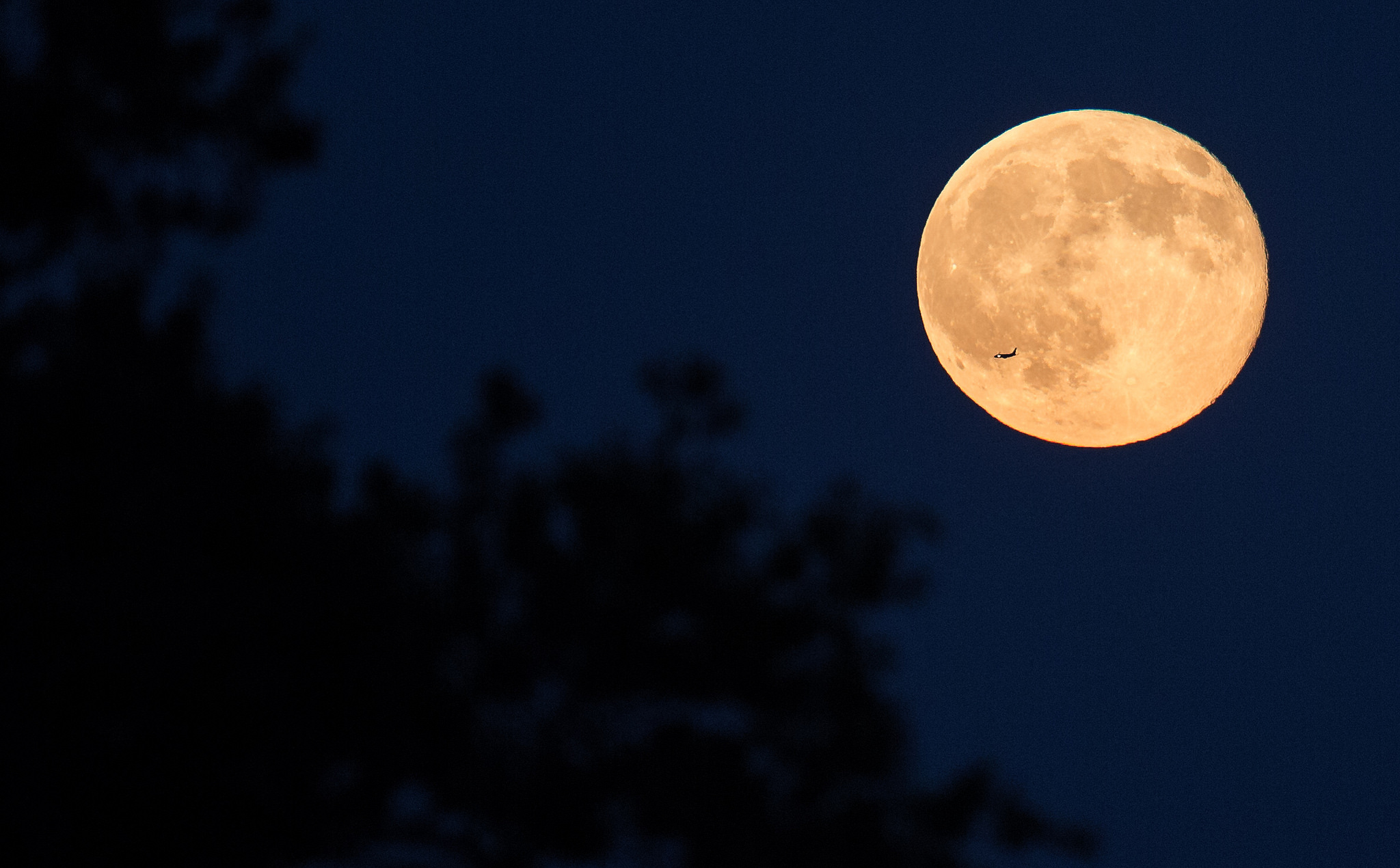Last 'Blue Moon' of 2018 Rises Tonight! What to Expect
A full Blue Moon rises into the evening sky tonight (March 31). This will be the second and final Blue Moon of 2018, so don't miss it!
Despite the name, the "Blue Moon" won't actually be blue. In fact, it will look the same as any other full moon. According to the current definition, the term refers to the second full moon in a given calendar month. The traditional definition of a Blue Moon was reserved for the third full moon in a season that has four full moons, which happens in years that have 13 full moons instead of the usual 12.
The next seasonal Blue Moon will happen on May 18, 2019, but per the newer definition of the term, the next monthly Blue Moon won't occur until Oct. 31, 2020. The last Blue Moon was an extra special one, as it coincided with a "supermoon" and a total lunar eclipse. [In Photos: The Super Blue Blood Moon Eclipse of 2018]
If you have bad weather today, you can see the Blue Moon online during a live Slooh webcast at 4 p.m. EDT (2000 GMT). You can watch the webcast directly from Slooh here.
Today's full moon, which is the first full moon of spring, is also known as a "Paschal Moon," which is the full moon right before Easter Sunday. It has also been nicknamed the "Sap Moon" by Native American tribes "as it marks the time when maple sap begins to flow and the annual tapping of maple trees begins," according to the Old Farmer's Almanac.
Today, the moon will reach its fullest phase at 8:37 a.m. EDT (1237 GMT). For viewers in the eastern United States, the moon will be below the horizon at this time, while those on the West Coast will be able to see it early in the morning.
If the full moon is below the horizon from your location, don't worry. It will still look full when it rises again later in the evening. You can find out exactly when the moon rises and sets at your location with this calculator at timeanddate.com.
Breaking space news, the latest updates on rocket launches, skywatching events and more!
If you can't see the Blue Moon for yourself, you can tune into a webcast from Slooh's online observatory, which will feature live views of the Blue Moon and commentary from Slooh astronomers.
Editor's note: If you capture an amazing photo or video of the Blue Moon and would like to share it with Space.com for a story or gallery, send images and comments to spacephotos@space.com.
Email Hanneke Weitering at hweitering@space.com or follow her @hannekescience. Follow us @Spacedotcom, Facebook and Google+. Original article on Space.com.

Hanneke Weitering is a multimedia journalist in the Pacific Northwest reporting on the future of aviation at FutureFlight.aero and Aviation International News and was previously the Editor for Spaceflight and Astronomy news here at Space.com. As an editor with over 10 years of experience in science journalism she has previously written for Scholastic Classroom Magazines, MedPage Today and The Joint Institute for Computational Sciences at Oak Ridge National Laboratory. After studying physics at the University of Tennessee in her hometown of Knoxville, she earned her graduate degree in Science, Health and Environmental Reporting (SHERP) from New York University. Hanneke joined the Space.com team in 2016 as a staff writer and producer, covering topics including spaceflight and astronomy. She currently lives in Seattle, home of the Space Needle, with her cat and two snakes. In her spare time, Hanneke enjoys exploring the Rocky Mountains, basking in nature and looking for dark skies to gaze at the cosmos.

